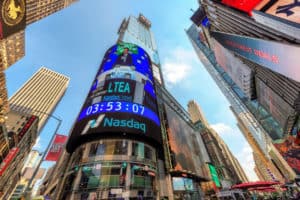 Nasdaq has warned US regulators to resist the temptation to limit dark trading through “coarse caps” and “blunt restrictions”.
Nasdaq has warned US regulators to resist the temptation to limit dark trading through “coarse caps” and “blunt restrictions”.
In its report, the European exchange and member of the Federation of European Securities Exchanges (FESE) has said the US regulators should take heed from lessons learned from the implementation of MiFID II and exercise caution around restricting dark trading too heavily.
“The European experience demonstrates that such approaches are complex, difficult to calibrate properly and tough to administer effectively,” Nasdaq said.
“Moreover, they only serve to eliminate flexibility for market participants that need or prefer to trade in the dark for valid reasons, including to facilitate block trading and to trade at the midpoint of the NBBO [National Best Bid and Offer].”
Instead, the exchange has suggested that US regulators better harmonise minimum quoting and trading increments across all markets “to allow for dark and lit trading to reach a natural and healthy equilibrium”.
Approximately half of equity trading volume took place in the dark at varying points in 2021, Nasdaq’s report found, while dark market activity accounts for more than 60% of many small-cap stocks trading volumes, with some approaching 80%.
Dark platforms enjoy greater flexibility than registered exchanges, Nasdaq said, as regulatory disparities allow dark venues to innovate under current guidelines while limiting exchanges and other execution platforms.
“The inability of lit markets and ATSs to operate in sub-penny increments—while non-ATS dark markets do so freely— constitutes a key disadvantage for lit markets seeking to provide innovative solutions that could serve investors well.”
“More than a third of all off-exchange trades are executed at sub-penny prices that exchanges are not permitted to use. This disparity does not serve the interests of investors or the public and should be remedied by allowing lit venues to quote and trade in the same increments as other venues.”
The European Commission and the European Securities Markets Authority (ESMA) moved to further restrict non-disclosed trading in Europe in a bid to boost lit markets in November with new restrictions on systematic internalisers ability to match at midpoint, MTFs ability to use the reference price waiver and with the introduction of a new blanket double volume cap (DVC) on dark trading.
FESE – of which Nasdaq is a member of – subsequently released a statement earlier this week calling for more stringent restrictions on dark trading including limiting only SI equity trading to above large in scale (LiS) only.
“Like Nasdaq, Cboe operates equity markets around the world, and so has a similarly broad perspective on what does and doesn’t work for end investors,” Natan Tiefenbrun, head of equities at Cboe Europe, told The TRADE.
“We’ve long argued that the focus of EU regulation should be on optimising investor outcomes and that includes ensuring the existence of a range of trading mechanisms to suit different trading strategies and styles. Any restriction on EU dark venues – including reference price waiver venues that facilitate midpoint executions – would be an un-costed and unnecessary measure and would hinder the ability of investors to achieve best execution.”